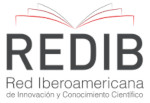Estudo de liberação do Rincoforol adsorvido em carvão ativado do endocarpo do coco de dendê
DOI:
https://doi.org/10.17648/diversitas-journal-v6i2-1686Abstract
ABSTRACT: Among the methods of controlling the spread of red ring disease, the use of pheromones associated with food traps has been shown to be very efficient in capturing the pest insect. The pheromone used is called Rincoforol and is available in microtubes. Studies are under development to apply the capture agent to solid matrices. In this context, the present work was carried out in order to evaluate the adsorptive capacity of the activated carbon of the palm oil endocarp in the incorporation of Rincoforol for controlled release of pheromone in the field. For this, a complete experimental planning (23) was carried out in order to evaluate the influence of the use of stabilizer with the pheromone, the granulometry of activated carbon and the number of holes in the sachet in the release process, obtaining in response to mass loss. It was found that the condition that favors the controlled release of the pheromone, when compared to the release made in eppendorf, was the use of formulated Rincoforol (with stabilizer) adsorbed on charcoal with smaller particle size (35 <ᴓ <28 mesh) and sachet with 5 holes, a condition found in experiment number 3, which showed less loss of mass.
KEYWORDS: Pheromone; Adsortion; Design of Experiments.
Metrics
Downloads
Published
How to Cite
Issue
Section
License
Copyright (c) 2021 Alex Tenório de Meneses, Milena Alves dos Santos, Larissa Lima de Arruda Melo, Rodolfo Junqueira Brandão, João Inácio Soletti, Henrique Fonseca Goulart

This work is licensed under a Creative Commons Attribution 4.0 International License.
The Diversitas Journal expresses that the articles are the sole responsibility of the Authors, who are familiar with Brazilian and international legislation.
Articles are peer-reviewed and care should be taken to warn of the possible incidence of plagiarism. However, plagiarism is an indisputable action by the authors.
The violation of copyright is a crime, provided for in article 184 of the Brazilian Penal Code: “Art. 184 Violating copyright and related rights: Penalty - detention, from 3 (three) months to 1 (one) year, or fine. § 1 If the violation consists of total or partial reproduction, for the purpose of direct or indirect profit, by any means or process, of intellectual work, interpretation, performance or phonogram, without the express authorization of the author, the performer, the producer , as the case may be, or whoever represents them: Penalty - imprisonment, from 2 (two) to 4 (four) years, and a fine. ”


















